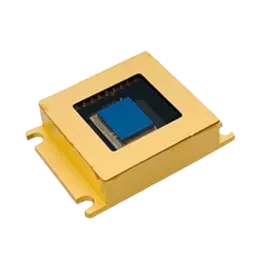The SWIR technology of GHOPTO generally has a wavelength range of 0.9~1.7μm, with the main sensing material being Indium Gallium Arsenide (InGaAs). Most SWIR technology detectors are made using InGaAs as the material. These detectors generally do not require cooling, making it easy to achieve small-sized, low-power devices. Compared to medium and long-wave infrared, GHOPTO's SWIR technology has higher resolution and its imaging effect is closer to that of visible light images. Compared to visible light, the SWIR camera has good fog penetration capability. Additionally, GHOPTO's SWIR technology has the following features:
The atmospheric night glow contains parts of the short-wave infrared spectrum. SWIR technology can image on nights with minimal starlight, providing a certain degree of night vision capability.
SWIR technology is very sensitive to moisture. Objects lacking moisture appear white, while those rich in moisture appear black, allowing the identification of whether an object has life.
Illumination at the 1550nm wavelength, which is safe for the human eye, is invisible to the naked eye but can be easily seen by SWIR technology cameras. SWIR technology has wide applications in both military and civilian sectors. In the military, Swir sensor technology is extensively used in intelligence, surveillance, reconnaissance, and other fields. In civilian use, short-wave can be applied in forensics, security, flaw detection, reagent testing, and anti-counterfeiting fields.
Since the optical materials used to make SWIR Technology lenses are mostly the same as those used for visible light, many people simply assume that ordinary visible light lenses can be matched with SWIR Technology detectors for imaging. This viewpoint is not entirely correct. Ordinary visible light lenses can indeed transmit the short-wave infrared spectrum, but due to the change in wavelength, the optical properties (dispersion) of the optical materials change fundamentally. The glass combinations used for ordinary visible light lenses cannot easily achieve chromatic aberration correction in the short-wave infrared band, leading to poor imaging quality and affected system resolution in the short-wave infrared band.
Additionally, due to the difference in wavelength, the transmission rate of visible light lenses in the short-wave range becomes poorer, and stray light issues may become severe. Therefore, lenses used in the short-wave infrared band require special design to perfectly match SWIR Technology detectors. There are not many glass combinations that can be used to correct chromatic aberration in the short-wave infrared range of 0.9~2.5μm. Some fluoride glasses have a high dispersion coefficient and relatively good physical and chemical properties in this spectrum, making them the preferred materials for chromatic aberration correction in this range. Heavy flint glass materials combined with fluoride glasses can achieve good chromatic aberration correction.



